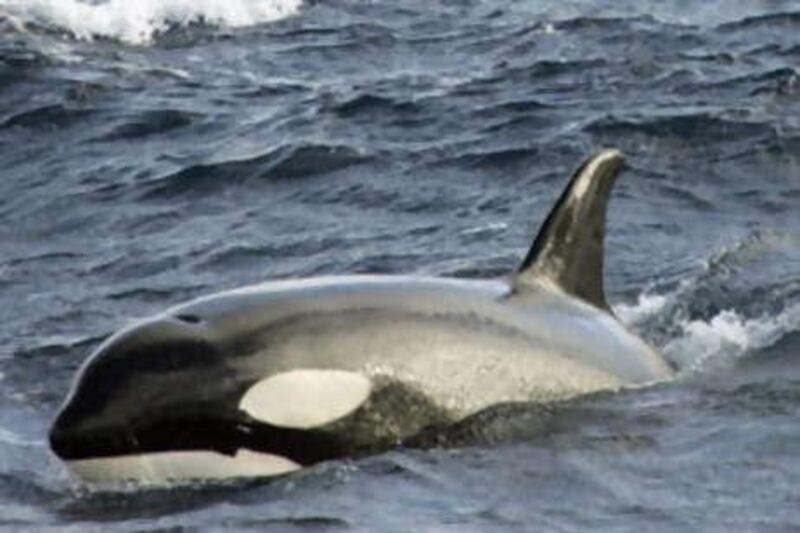ABU DHABI // Sightings of killer whales close to the shores of Abu Dhabi have piqued the curiosity of scientists, who fear the large black-and-white predators may start hunting the defenceless and endangered dugong that graze in the shallow coastal waters of the Gulf. Killer whales, also known as orcas, are no threat to humans but they are accomplished predators of large sea creatures, including dugong, and have rarely, if ever, been seen in Gulf waters, according to scientists at the Environment Agency Abu Dhabi (EAD). The large mammals feed on prey such as dolphins, turtles, squid and octopus - even seals and whales bigger than themselves - and have twice been spotted this year by divers in shallow waters off Taweelah, the new industrial area of Abu Dhabi. In June, a group of divers spotted and photographed seven orcas. Early in September, another was seen very close to the same location. The nearest to the country's shores they have previously been seen is in the deeper waters of the Strait of Hormuz at the entrance to the Gulf. "I have been here for nine years and I have never heard reports of orcas venturing inside the Gulf," said Dr Thabit Zahran al Abdessalaam, director of marine biodiversity management sector at the EAD. "Ecologically and distribution-wise, the possibility of encountering a killer whale inside the Gulf is very small. This sudden sighting in a number of locations is significant," he said. "Killer whales are accomplished hunters... it is an issue we need to look at." The offshore sightings are of particular concern as killer whales hunt the dugong, a large herbivorous creature that has no other local predators. Dugongs, which have paddle-like forelimbs and no hind limbs, use their large downturned snouts to graze on sea grasses, and inhabit the shallow waters and mangrove channels where the grasses are found. Although legally protected, the animals are in decline in many areas around the world and in danger of extinction. EAD scientists have begun looking for answers as to why the killer whales are coming close to shore. The orcas are cetacean mammals like whales, dolphins and porpoises. They have a recognisable black-and-white pattern, but despite their name are actually large dolphins. Males can reach almost 10 metres in length and females 8.5 metres, and their predatory habits and taste for large prey mean their reported arrival in the Gulf could spell bad news for the defenceless dugongs. Scientists say it is not clear what has led to the changes in the killer whales' behaviour and brought them into the shallow coastal waters of the Gulf. They are migratory animals that roam the oceans from the Arctic and Antarctic to tropical seas. "I don't know what is triggering this," said Dr Abdessalaam. To answer the question, the EAD is to consult leading orca specialists and conservation organisations. One possible explanation for the killer whales' sudden appearance might be that changes along their migratory routes are forcing them to venture into new territories. "We will look if there is a pattern in changes of water and climatic conditions in other parts of the world," Dr Abdessalaam said. "We will compare that with changes in water, climate and ecological conditions." However, he could not say how long it might take to find answers. "At the moment, we are working on formulating the right questions." vtorodova@thenational.ae
Scientists on alert as killer whales enter local waters
Sightings of the large black-and-white predators close to Abu Dhabi have piqued the curiosity of scientists.

More from the national




